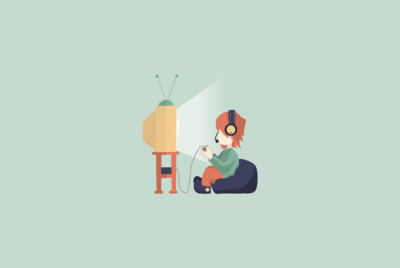Common Pitfalls in Game Design 1
In our journey through the world of game design, we’ve uncovered that even the most seasoned developers can fall into some common traps. “Common Pitfalls in Game Design” delves into these frequent missteps, such as neglecting the user experience, overloading the game with unnecessary features, and failing to strike a balance between challenge and fun. Understanding these pitfalls can save us time and enhance our game’s appeal, ensuring we create experiences that players will love and return to time and again. Let’s explore these challenges so we can learn together and improve our game design skills. Have you ever wondered why some games captivate us for hours, while others quickly lose our interest? In the world of game development, the journey from a brilliant idea to a fully realized game is filled with numerous obstacles. As game designers and developers, we often encounter common pitfalls that can make or break the success of our projects.
In this article, “Common Pitfalls in Game Design,” we’ll explore these challenges and provide insights on how to navigate them effectively. Whether you’re a seasoned developer or just starting in the field, understanding these pitfalls can help us create more engaging and successful games.
Unrealistic Scope and Ambitions
One of the most frequent pitfalls in game design is setting unrealistic goals and ambitions. We often dream big, envisioning complex worlds, intricate mechanics, and limitless possibilities. While ambition is crucial, we must be mindful of the resources, time, and skills at our disposal.
Overestimating Development Time
Estimating the time required to develop a game can be tricky. Underestimating this can lead to missed deadlines, rushed features, and ultimately, a compromised final product. We need to break down the development process into smaller, manageable tasks and set realistic milestones.
Table: Realistic vs. Unrealistic Time Estimation
| Task | Realistic Estimation | Unrealistic Estimation |
|---|---|---|
| Basic Prototype | 2-3 weeks | 1 week |
| Core Mechanics | 2 months | 1 month |
| Art and Assets Creation | 3-4 months | 2 months |
| QA Testing | 1-2 months | 2 weeks |
Feature Creep
Adding new features during development can be tempting, but this often leads to feature creep. This phenomenon occurs when new ideas are continuously added without consideration for the overall scope, leading to a bloated and unfinished game. We must prioritize core features and stick to them unless there is a vital need for additional elements.
Lack of Clear Vision
Without a clear vision, it’s easy for a game to lose its direction. We need to have a strong concept, narrative, and objectives from the get-go.
Inconsistent Gameplay and Storyline
Inconsistencies in gameplay mechanics and storyline can confuse players and detract from the overall experience. Every element of our game should support a unified vision, ensuring players stay engaged and immersed.
Ambiguous Target Audience
Knowing our target audience is critical. Designing a game that tries to appeal to everyone often results in a product that resonates with no one. We need to research potential players, understand their preferences, and tailor our game accordingly.

Poor User Experience (UX)
A well-designed user experience is vital for the success and enjoyment of any game. Ignoring UX can result in frustrated players and negative reviews.
Complex Controls
Overcomplicated controls can deter players from fully engaging with our game. Controls should be intuitive and accessible, allowing players to focus on the game itself rather than struggling with mechanics.
Lack of Proper Tutorials
Introducing players to our game through clear and engaging tutorials can make a significant difference in their experience. Tutorials should be concise, interactive, and spaced out to avoid overwhelming new players.
Table: Effective vs. Ineffective Tutorials
| Aspect | Effective Tutorial | Ineffective Tutorial |
|---|---|---|
| Length | Short and concise | Long and tedious |
| Delivery Method | Interactive and hands-on | Text-heavy and passive |
| Timing | Spread throughout the game | All at the beginning |
Ignoring Player Feedback
Player feedback is invaluable, yet it’s often overlooked. Listening to our players helps us understand what’s working and what isn’t, allowing us to make necessary adjustments.
Lack of Beta Testing
Skipping beta testing can lead to unresolved bugs and balance issues. We should involve players early on through closed or open beta tests, gather their feedback, and use this information to refine and polish our game.
Disregarding Community Input
Our game’s community can be a treasure trove of ideas and insights. Engaging with our community through forums, social media, and surveys helps us stay connected with player expectations and preferences.

Technical Hurdles
Technical issues can severely impact the gameplay experience. We need to anticipate and address these challenges during the development process.
Performance Optimization
Poor performance, such as lag and low frame rates, can frustrate players. Optimizing our game to run smoothly on different hardware setups is essential. This includes managing resources efficiently and minimizing unnecessary background processes.
Cross-Platform Compatibility
Designing a game to function seamlessly across multiple platforms can be complex. We need to consider the limitations and strengths of each platform, ensuring a consistent experience regardless of where our game is played.
Inadequate Testing
Testing is a cornerstone of game development. Neglecting this can lead to a launch fraught with technical issues and unsatisfactory gameplay elements.
Insufficient QA Processes
Quality Assurance (QA) processes should be thorough and systematic. Rushing through testing phases or allocating insufficient resources to QA can result in a game riddled with bugs and glitches. We need a robust QA plan that covers various aspects of gameplay and technical performance.
Ignoring Diverse Playstyles
Players approach games in different ways. Our testing should account for diverse playstyles to ensure our game offers a balanced experience. This means considering various strategies, objectives, and preferences that players might have.
Table: Comprehensive QA Testing Elements
| Testing Aspect | Key Focus Areas | Importance Level |
|---|---|---|
| Functional Testing | Core mechanics, controls, and basic functionality | High |
| Compatibility Testing | Performance across different devices/platforms | High |
| Usability Testing | User interface and experience | Medium |
| Performance Testing | Frame rates, load times, and resource management | High |
| Regression Testing | Previously fixed issues that may reappear | Medium |
| Security Testing | Data protection and privacy concerns | Medium |

Neglecting Balance and Pacing
Balance and pacing are crucial for keeping players engaged and challenged. Poor balance can result in frustrating or boring experiences, while improper pacing can disrupt the flow of gameplay.
Difficulty Spikes
Sudden and unexplained increases in difficulty can frustrate players. We need to ensure a smooth and gradual increase in challenge, guiding players as they develop their skills and understanding of the game.
Uneven Content Distribution
Long periods with little to no engagement can lose players’ interest. The content should be evenly distributed to maintain engagement, including balanced levels, missions, and task sequences.
Monotonous Gameplay
Variety is the spice of life, and the same goes for gaming. Monotonous gameplay can quickly bore players, causing them to abandon our game.
Repetitive Mechanics
Using the same mechanics repeatedly without introducing new elements can make our game feel monotonous. We need to introduce variety through different objectives, environments, and challenges to keep players engaged.
Lack of Innovation
While it’s essential to lean on tried-and-true mechanics, we should also strive for innovation. Incorporating unique elements or a fresh twist can set our game apart and captivate players.
Poor Marketing Strategy
A fantastic game can go unnoticed without an effective marketing strategy. Marketing should be an integral part of our game development process from the start.
Late Marketing Initiatives
Starting our marketing efforts too late can hinder our ability to build anticipation and interest. Promoting our game early and consistently helps generate buzz and attract players.
Ineffective Branding
Our game’s branding, including its name, logo, and promotional materials, should be memorable and resonate with our target audience. Ineffective branding can result in a lack of recognition and interest.
Table: Effective vs. Ineffective Marketing Strategies
| Aspect | Effective Strategy | Ineffective Strategy |
|---|---|---|
| Timing | Early and consistent promotion | Last-minute efforts |
| Social Media Engagement | Active interaction with potential players | Minimal or no engagement |
| Press and Influencers | Collaborating with gaming press and influencers | Ignoring media outreach |
Lack of Post-Launch Support
Our work doesn’t end when the game is launched. Post-launch support is crucial for maintaining a positive player base and building a lasting game.
Ignoring Bugs and Issues
Even with rigorous testing, some issues might only become apparent after launch. Addressing these promptly and transparently is vital for maintaining player trust and satisfaction.
Failing to Update and Expand
Regular updates, bug fixes, and new content can keep our game fresh and engaging. Ignoring the post-launch phase can lead to a decline in player interest and engagement.
Unrealistic Monetization Models
While monetization is essential for sustaining our game, an unrealistic or overly aggressive model can alienate players.
Overemphasis on Microtransactions
Microtransactions have become a common monetization strategy, but overemphasis on them, especially if they give significant gameplay advantages, can frustrate players. We need to strike a balance ensuring that microtransactions are fair and optional.
Ignoring Player Value
Our monetization strategy should provide value to players. Overpriced items or unfair paywalls can drive players away. Offering reasonable pricing and rewarding experiences can foster a loyal player base willing to spend.
Conclusion
Navigating the common pitfalls in game design is no small feat, but awareness and proactive measures can make all the difference. By setting realistic goals, maintaining a clear vision, focusing on user experience, and valuing player feedback, we can create engaging and successful games. Remember that every challenge we face is an opportunity to learn and grow. Let’s embrace these insights to craft unforgettable gaming experiences. Happy designing, everyone!


